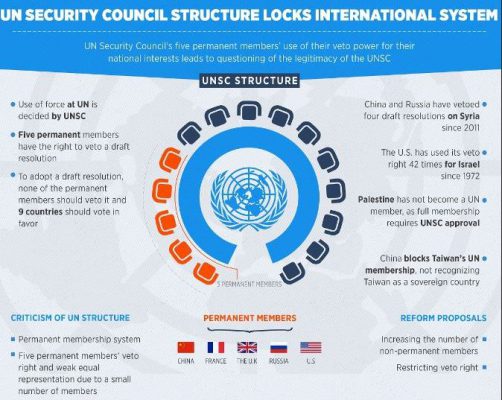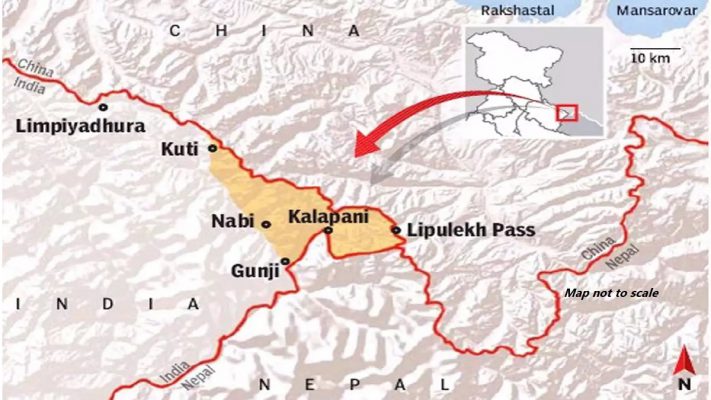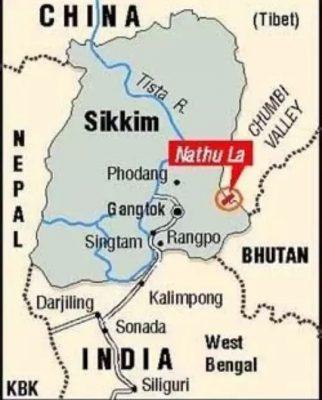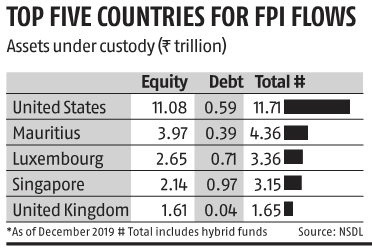- Home
- Prelims
- Mains
- Current Affairs
- Study Materials
- Test Series
 EDITORIALS & ARTICLES
EDITORIALS & ARTICLES
Daily Current Affairs | 19th June 2020
Galwan Valley: India and China downplay reports of soldier release
As tensions between India and China remain high on the disputed border following the death of at least 20 Indian soldiers, a search for military options is leading to questions about the current status of the mountain strike corps, sanctioned seven years ago but stalled two years ago for lack of funds. With only one of its two divisions raised, it now exists in a truncated shape while being tested for Army’s new integrated battle group (IBG) concept.






- Preliminary role for the truncated mountain strike corps is for an offensive – not limited to the east, but in Ladakh as well – in that sense, it is a dual role.
- It will definitely come into play if a war breaks out, a military official said. But others contend that had the full raising gone as per schedule, the mountain strike corps could have been an effective deterrent, raising costs for trans-LAC incursions by China.
- Used as a testbed for the IBG model devised under the previous Army chief General Bipin Rawat, the Panagarh-headquartered 17 Corps now exists in a different form than was sanctioned in 2013.
- The new IBG model was tested in a major exercise, Him Vijay, in the eastern theatre last October, to validate the concept of a swift offensive in the high mountains along the China border.
- The first division of the mountain strike corps was raised in the eastern sector but the raising of the second division at Pathankot in 2017-18 was never completed.
- The raising was stopped due to a paucity of funds with the government, along with a rethink within the Army over the limitations in launching a full-fledged strike corps at the current levels of border infrastructure.
- Funds had always been a major issue for the raising of the strike corps, even when the initial raising expenditure of about Rs 65,000 crore was not additionally allocated but considered to be a part of the normal budget.
- This led to the Army dipping into its resources for equipping the newly raised units, which caused an alarming fall in its War Wastage Reserves (WWR).
- WWR are collections of military material and ammunition with the Army that can sustain a 40-day intense war.
- As the then defence minister, the late Manohar Parrikar, explained to journalists, the mountain strike corps was not a financially viable project and those funds could be better utilised to modernise the Army.
- When the concept of IBG was finalised in 2018, this mountain strike corps became one of the testbeds along with the Pathankot-based 9 Corps.
- Under the new concept, 17 Corps is supposed to have three IBGs, each comprising around 4,000 soldiers under a Major General, directly under the operation control of the Corps headquarters.
- The IBG concept is envisaged to create in the mountain strike corps, an ability to move, deploy and launch limited offensives in the mountains very quickly.
- The aim of raising the mountain strike corps in a non-defensive role was to create capabilities to deter China’s aggressive behaviour along the 3,488 km long Sino-India border.
- This had followed the raising of two new divisions in 2010 to strengthen the deployment in Arunachal Pradesh, along with an armoured, artillery and infantry brigade for other sectors of the LAC.

- India will sit in the most powerful UN organ, for two years beginning on January 1, along with the five permanent members China, France, Russia, UK and the US as well as non-permanent members Estonia, Niger, Saint Vincent and the Grenadines, Tunisia and Vietnam.
- India was a candidate for a non-permanent seat from the Asia-Pacific category for the 2021-22 term. Its victory was a given since it was the sole candidate vying for the lone seat from the grouping.
- New Delhi’s candidature was unanimously endorsed by the 55-member Asia-Pacific grouping, including China and Pakistan, in June last year.
- Previously, India has been elected as a non-permanent member of the Council for the years 1950-1951, 1967-1968, 1972-1973, 1977-1978, 1984-1985, 1991-1992 and most recently in 2011-2012.
- The UN General Assembly on 17 June 2020 conducted elections for President of the 75th session of the Assembly, five non-permanent members of the Security Council and members of the Economic and Social Council under special voting arrangements put in place due to COVID-19 related restrictions.
- Turkish diplomat and politician Volkan Bozkir was elected as President of the 75th session of the UN General Assembly. He was the endorsed candidate from among the Western European and other States.
- In adherence to social distancing guidelines due to the coronavirus pandemic, the 193 UN Member States were allotted different time slots to cast their votes in the General Assembly Hall for the crucial elections.
- Eight time slots were allocated to Member States to cast their ballots, in adherence to social distancing guidelines. The time slot for India to cast its ballot was 11:30 am-12noon.
- President of the UN General Assembly Tijjani Muhammad-Bande oversaw the proceedings in the General Assembly Hall and the tellers also observed the whole process.
- For the two vacant seats from among the African and Asia-Pacific States, Djibouti, India and Kenya were the three candidates.
- For the one vacant seat from among the Latin American and Caribbean States, one endorsed candidate was Mexico. For the two vacant seats from among the Western European and other States, Canada, Ireland and Norway were the three candidates.
- The 15-member Security Council has five permanent members – the US, the UK, France, Russia and China – and 10 non-permanent.
- Each year the General Assembly elects five non-permanent members for a two-year term.
- The 10 non-permanent seats are distributed on a regional basis as follows: five for African and Asian States; one for Eastern European States; two for the Latin American and Caribbean States; and two for Western European and other States.
- To be elected to the Council, candidate countries need a two-thirds majority of ballots of Member States that are present and voting in the Assembly.
- India has been at the forefront of the years-long efforts to reform the Security Council, saying it rightly deserves a place as a permanent member of the Council, which in its current form does not represent the geo-political realities of the 21st Century.
- The congress moved to enact the legislation at the national level after Hong Kong's own Legislative Council was unable to do so because of strong local opposition.
- Critics say it could severely limit free speech and opposition political activity and legal experts say Beijing's legal justifications for acting are highly debatable.
- China acted after the widespread and sometimes violent anti-government protests in the territory last year that Beijing saw as a dangerous campaign to split Hong Kong from the rest of China.
- The U.S. has said that if the law is passed it will revoke some of the special privileges granted to Hong Kong after the former British colony was handed over to Chinese rule in 1997, while Britain has said it will offer passports and a path to citizenship to as many as 3 million Hong Kong residents. Beijing has denounced the moves as interference in its sovereign affairs.
- On 17 June 2020, the Group of Seven leading economies called on China to reconsider its plans in a joint statement voicing grave concern regarding China's decision to impose a national security law on Hong Kong, adding that it would breach Beijing's international commitments as well as the territory's constitution.
- The Asian financial hub's highly respected legal system already covers security issues from money laundering to terrorism and cyber crime. That leaves the proposed legislation to deal with vaguely defined crimes of a highly political nature along the lines found in mainland China's Communist Party-dominated system.
- Earlier this month, Hong Kong's legislature approved a contentious bill making it illegal to insult the Chinese national anthem after pro-democracy lawmakers boycotted the vote out of protest.
- Senior opposition figures have also been arrested for taking part in demonstrations and questions have arisen over whether the national security legislation will be used to disqualify pro-democracy candidates in September's elections for the Beijing-controlled Legislative Council.
- Hong Kong was handed back to China from British control in 1997, but under a unique agreement - a mini-constitution called the Basic Law and a so-called "one country, two systems" principle.
- Under the same agreement, Hong Kong had to enact is own national security law - this was set out in Article 23 of the Basic Law.
- But its unpopularity means it has never been done - the government tried in 2003 but had to back down after protests.

- The National Assembly, or the upper house of the Nepalese parliament, unanimously passed the Constitution amendment bill providing for the inclusion of the country's new political map in its national emblem.
- The bill to amend the Constitution to update the new map was tabled in the National Assembly, the upper house, a day after the House of Representatives unanimously endorsed it.
- All 57 members of the National Assembly, who were present on the occasion, voted in favour of the amendment bill. There was zero vote against the Bill.
- Now the bill will be sent to President Bidya Devi Bhandari for authentication after which it will be incorporated in the Constitution. After that, the new map will be used in all official documents, including the coat of arms. The Cabinet had endorsed the new political map on May 18.
- The India-Nepal bilateral ties came under strain after Defence Minister Rajnath Singh inaugurated a 80-km-long strategically crucial road connecting the Lipulekh pass with Dharchula in Uttarakhand on May 8.
- Nepal reacted sharply to the inauguration of the road claiming that it passed through Nepalese territory. India rejected the claim asserting that the road lies completely within its territory.
- India has sternly asked Nepal not to resort to any "artificial enlargement" of territorial claims.
- Nepalese Prime Minister K P Sharma Oli has been asserting that Lipulekh, Kalapani and Limpiyadhura belong to Nepal and vowed to "reclaim" them from India.
- The Department of Biotechnology (DBT) under the Ministry of Science and Technology along with the Andhra Pradesh Med-tech Zone (AMTZ) has initiated DBT-AMTZ COMManD (COVID-19 Medtech Manufacturing Development) consortia to address the shortage of critical healthcare technologies in India and move progressively towards a stage of self-sufficiency.
- AMTZ is Asia's first medical equipment manufacturing ecosystem, uniquely dedicated for medical technology and supported by various ministries. The mobile testing lab is an outcome of this initiative.
- This mobile testing facility will be deployed through the DBT testing hubs to remote regions of the country for coronavirus testing.
- There are now over 20 hubs in the country with 100 testing laboratories and these have tested more than 2,60,000 samples.
- In the near future with all these collective and cooperative efforts, India will achieve self-sufficiency in healthcare technologies leading towards ‘Atma Nirbhar Bharat'.
- DBT Secretary Renu Swarup said through the concerted efforts of Indian scientists, the country has achieved a capacity of producing over 5 lakh testing kits per day, exceeding the target of having one lakh test kits by May 31.
- She also noted that I-Lab has been created in a record eight days by the Andhra Pradesh Med-tech Zone team with the support of DBT.
- The bench also told Odisha government not to allow the yatra or pilgrimage procession and related activities anywhere in the state to avoid spread of coronavirus.
- The top court's order came on a PIL filed by Odisha based NGO seeking cancellation or postponement of this year's Rath Yatra, which continues for 10 to 12 days and is attended by millions of devotees from across the world.
- The Puri Rath Yatra is considered as one of India's biggest chariot procession which is held for a span of around 10-12 days.
- The procession begins from Puri's Jagannath Temple and witnesses huge gatherings of lakhs of devotees from around the world.
- During the Yatra or procession, devotees pull forward the chariot of Lord Jagannath. As part of Rath Yatra, the deities present at the temple of Lord Jagannath, Lord Balabhadra, Devi Subhadra and Devi Sudarshan are placed on the Rath or Chariot.
- Puri Rath Yatra festival is celebrated every year to commemorate Lord Jagannath's annual visit to the Gundicha Temple through Mausi Maa Temple (maternal aunt's home), which is located near Saradha Bali, Puri.
- The Puri Rath Yatra chariot is made from the wooden logs which are supplied by Odisha government free of cost.
- These logs are delivered at the Jagannath Temple on the occasion of Vasant Panchami in January or February every year.
- The construction of chariot requires around 4,000 pieces of wood. The Odisha Government started plantation program in 1999 to plant more trees in forests as the government provides logs by cutting trees of the forests.
- Once the Yatra finishes, the chariot is dismantled and its wood is used in the kitchen of Jagannath Temple.

- Nathu La was the flashpoint between the Indian Army and PLA in September 1967.
- A scuffle broke out between the two armies’ soldiers which ultimately led to fights with artillery guns and threats from fighter jets.
- The whole episode left 88 soldiers dead on the Indian side while the PLA had to suffer the loss of 300 lives of its PLA soldiers.
- The Indian side had decided to fence the frontier with three layers of barbed wire in the weeks and months ahead of the clash and the fencing work had begun on August 20, 1967.
- On August 23, about 75 Chinese in battle dress, carrying bayonet-fitted rifles, slowly advanced in an extended line toward Nathu La and stopped at the border.
- The Political Commissar — identifiable by a red patch on his cap, and the only one who could speak some English — read slogans from a red book that was shouted after him by the rest of the party.
- The Indian troops stood, observed, and waited as the Chinese withdrew after over an hour, only to return later for a continued protest.
- On September 5, the Political Commissar had a disagreement with the Commanding Officer of the local infantry battalion, Lt Colonel Rai Singh, as the barbed wire fence was being converted to a concertina coil and it led to the suspension of the fencing work.
- However, the fencing work was resumed on September 7 which led to around 100 Chinese soldiers rushing towards the Indian side of the border, ultimately leading to a scuffle. The Chinese resorted to stone-pelting, Indians responded in kind.
- The Chinese had on September 10 sent India a ‘stern warning’ via the embassy that its border defence troops were closely monitoring the situation along the China-Sikkim boundary and the Indians were to be held responsible for ‘grave consequences’ in case of continued ‘provocative intrusions’ by the Indian troops.
- The Indian corps commander had on September 11 ordered completion of the fence. That day the Chinese, led by the Political Commissar, came to protest as work began. Corps commander Lt Col Rai Singh went out to converse with them when the Chinese immediately opened fire at him, leaving him wounded.
- Having seen their CO struck, the Chinese post was targeted by the Infantry battalion but the Indian army suffered loss as its soldiers who were patrolling in open were taken down by the Chinese machine gun.
- After suffering heavily at the hands of Chinese, the Indian Army responded with artillery fire and destroyed the presence of every Chinese post.
- The final round of assault by artillery by the Indian Army killed more soldiers on the Chinese side than the casualties they had to bear in the initial round of firing started by the Chinese army.
- Caught napping by the heavy firing in response from the Indian Army, the PLA had threatened to strike with warplanes but Indians held their ground and subsequently the Chinese backed off from the post.
- After attaining a relative position of strength, India had on September 12 sent a note to the Chinese with a proposal of an unconditional ceasefire across the Sikkim-Tibet border from September 13 at 5:30 am. The proposal was dismissed but it led to calm down of the nerves until September 14.
- The Chinese on September 15 handed over the Indian soldiers’ bodies with arms and ammunition saying they were behaving in the interests of “preserving Sino-Indian friendship.”
- Limited scuffle and skirmishes have been going on between the two sides since the Nathu La firing but the situation did not escalate the way it has at Galwan Valley in Ladakh this time.
- Various media reports are claiming that the casualties on the Indian side can be around 20 as some of the soldiers who got injured in the attack by the Chinese are in critical condition.

- Globally, the FATF grey list could create a negative perception towards Mauritius, especially among large investors such as pension, endowment, and sovereign wealth funds.
- India's apex bank recently rejected a few applications for NBFC licenses as the investment was routed through Mauritius.
- The FATF had identified the areas in which Mauritius has to demonstrate an increase in the level of effectiveness of its AML/CFT system.
- Mauritius has obtained technical assistance from the EU funded AML/CFT Global Facility and the German government through the German Development Agency, the GIZ, to support the implementation of the FATF Action Plan.
- Mauritius meets 53 out of the 58 recommended actions of the FATF at present, including the big six recommendations, and there is an agreed timeline to cure the identified shortcomings.
- Mauritius had initially hoped to meet the remaining action plans by the end of the year. It subsequently decided to accelerate the process, setting itself a deadline of August 2020, a year ahead of schedule.
- Mauritius is committed to implement the action plan one year ahead of the schedule agreed with the FATF. Various technical committees have been set up to address each of the five shortcomings with strict outcomes and time frame.
- Mauritius has submitted a report to the FATF to address the five issues raised. The evaluation of the report has been postponed, due to the Covid-19 pandemic.
- The Mauritius government is fully committed to exit the FATF and the EU lists. Mauritius is largely compliant with 35 out of the 40 Recommendations of FATF.
- Last month, the European Commission, the executive branch of the European Union, included Mauritius in its revised list of high-risk countries with strategic deficiencies in their anti-money laundering and counter-terrorist financing frameworks.
- The Mauritian Authorities delivered on their commitment and a first progress report was sent to the FATF on the agreed date.
- Regrettably, the FATF process has been halted due to the Covid-19 situation and the progress report could not be assessed.
- Black List: Only those countries are included in this list that FATF considers as uncooperative tax havens for terror funding. These countries are known as Non-Cooperative Countries or Territories (NCCTs). In other words; countries that are supporting terror funding and money laundering activities are placed in the Blacklist.
- Grey List: Those countries which are not considered as the safe heaven for supporting terror funding and money laundering; included in this list. The inclusion in this list is not as severe as blacklisted.
- Now the Grey list is a warning given to the country that it might come in Black list (Just like a yellow card in a football match).
- If a country is unable to curb mushrooming of terror funding and money laundering; it is shifted from grey list to black list by the FATF.
- The multilateral funding agency and the Asian Development Bank are co-financing loans that will help India in bolstering economic aid for businesses, including for the informal sector, expanding social safety nets for the needy, and strengthening the country’s health care systems.
- India is vulnerable to the pandemic given that around 270 million people continue to live below the national poverty line.
- Around 81 million live in densely populated informal settlements with limited access to health services. The disruption in economic activities threatens to impact poor households disproportionately, especially women, many of whom are employed in the informal sector.
- Many of the world’s low and middle-income countries are still in the early stages of the health crisis but are already feeling the impacts of the pandemic.
- This poses an enormous risk for millions across India who have only recently emerged from poverty, said AIIB Vice President.
- AIIB does not have a regular instrument for policy-based financing. It is extending such financings on an exceptional basis under the CRF to support its members through projects co-financed with the World Bank or the Asian Development Bank.
- The Asian Infrastructure Investment Bank (AIIB) is a multilateral development bank with a mission to improve social and economic outcomes in Asia.
- Headquartered in Beijing, began operations in January 2016 and have now grown to 102 approved members worldwide.
- By investing in sustainable infrastructure and other productive sectors in Asia and beyond, AIIB will better connect people, services and markets that over time will impact the lives of billions and build a better future.
- A new research paper filed by the Planetary Science Institute in the Journal of Geophysical Research said that the morphological features on Titan pointed out formations of halos, elevated ramparts, islands and some collapsed sections.
- These are common with volcanic activities going around and studying it revealed the volcanoes are active on Titan.
- Charles Wood, co-author of the study, said that there is a close association between polar lakes and proposed volcanic craters and this is consistent with any volcanic origin via eruptions and later collapse.
- Some craters look fresh and that may mean the volcanic activities have been recent on Titan and it is much likely that they have been continuing till today.
- Some evidence for internal heat along with presence of cryovolcanoes which is made through water ice crust into liquid water which erupts on the moon’s surface. These features are kind of round, have raised rims, and may overlap each other.
- The shapes of other volcanic landforms are more or less the same as on Earth and Mars and are formed by the explosion, excavation and collapse.
- According to him, these features are usually at polar regions and near to lakes having methane or nitrogen that can boost the activity. And since these features are fresh, it is likely that the activity is still active today.
- For those tracking space related developments, the very idea of explosive volcanoes in space is an exciting prospect to further probe into.









 Latest News
Latest News General Studies
General Studies